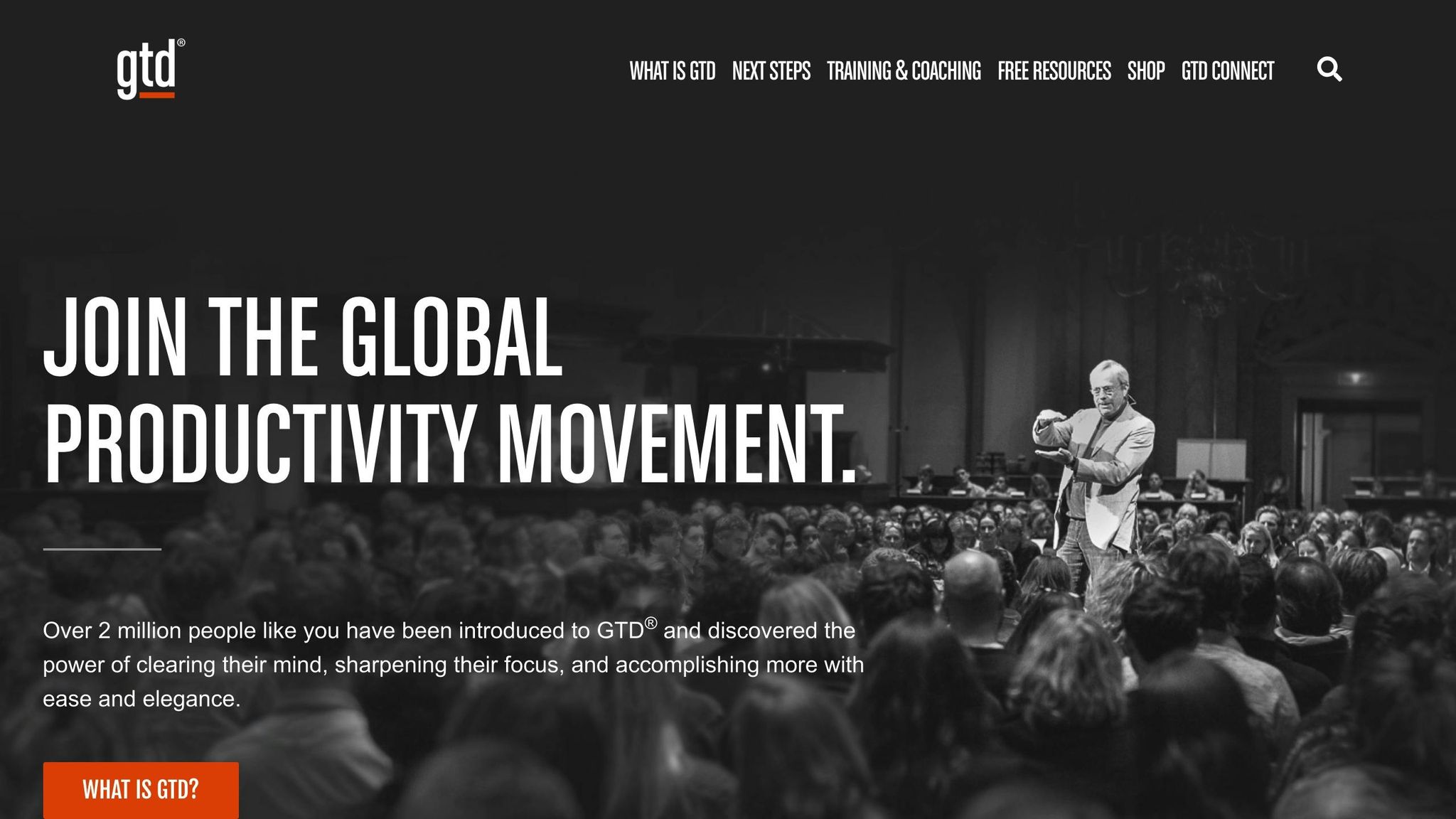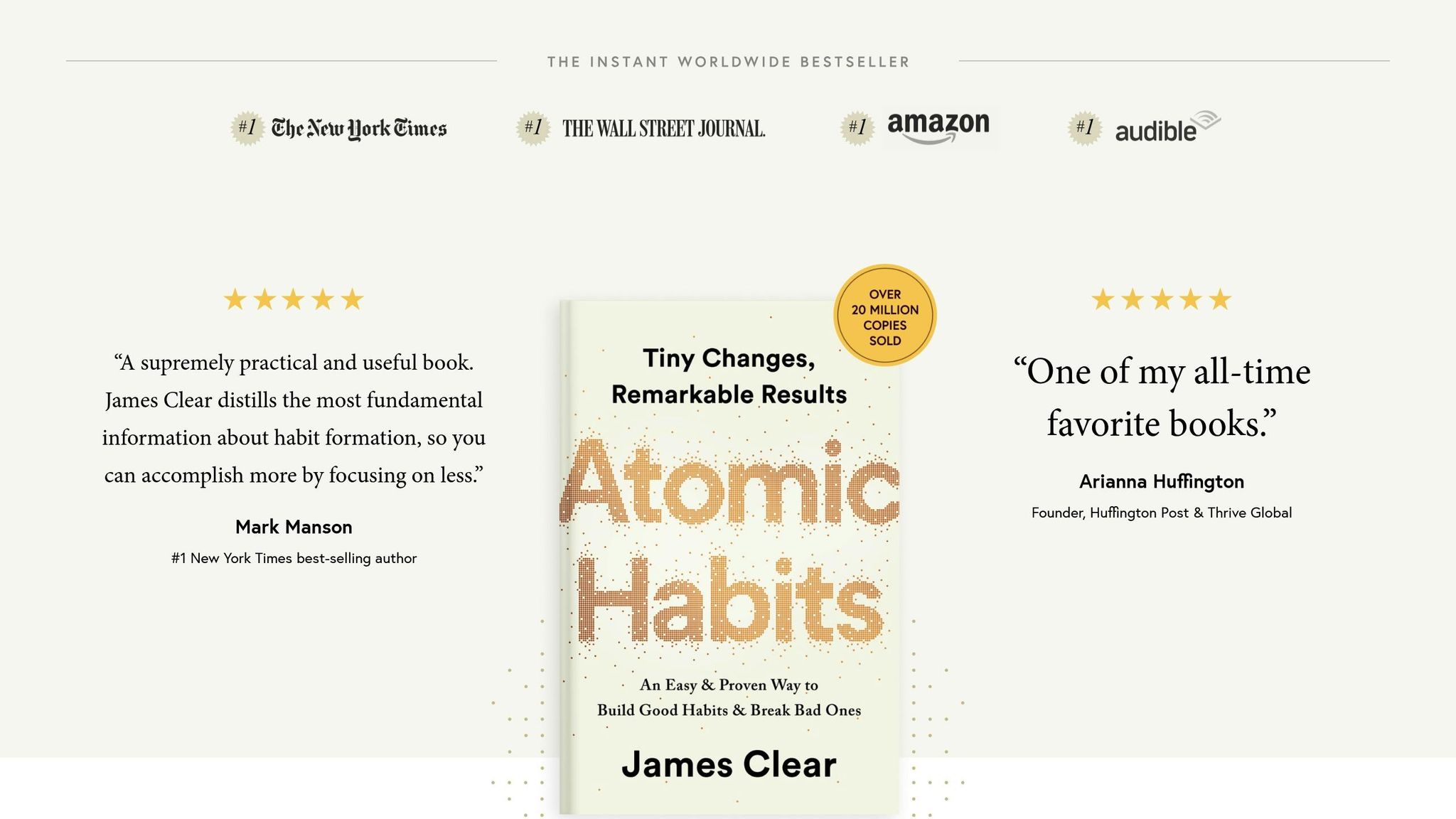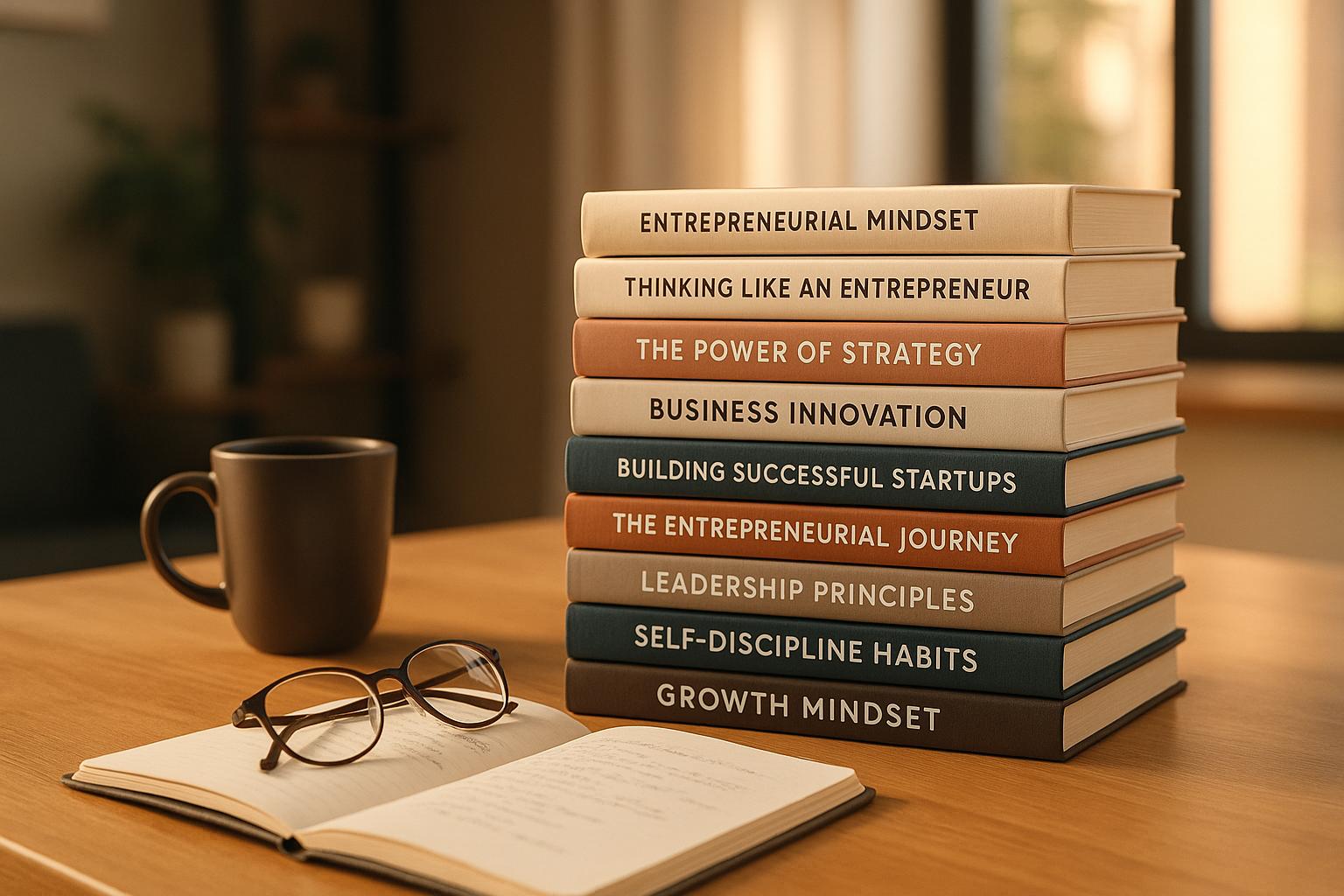Classic productivity books like The 7 Habits of Highly Effective People and Getting Things Done focus on building core principles and character. In contrast, modern titles like Atomic Habits and Deep Work tackle today’s challenges, like managing digital distractions, using research-backed strategies.
Here’s what you need to know:
- Classics: Emphasize long-term growth through habits, self-management, and ethical principles.
- Contemporary: Offer actionable, step-by-step methods based on neuroscience and psychology.
- Key Differences: Classics are about timeless principles, while modern books focus on solving current tech-driven challenges.
Quick Comparison Table
| Aspect | Classic Books | Contemporary Books |
|---|---|---|
| Focus | Core principles and character building | Practical strategies and habits |
| Challenges Solved | Time management, personal growth | Digital distractions, habit formation |
| Research Base | Lived experiences | Backed by neuroscience and studies |
| Implementation | Broad frameworks | Small, incremental changes |
Whether you prefer the timeless wisdom of classics or the actionable tips of modern books, there’s a resource to match your productivity needs.
Ranking the 10 Most Popular Productivity Books
1. Getting Things Done by David Allen

David Allen's "Getting Things Done" (GTD) has an impressive 4.5/5-star rating from over 10,000 Amazon reviews. Fast Company calls Allen "the personal productivity guru", and his GTD approach has inspired a range of tools, seminars, and resources.
The GTD system is based on a simple idea: productivity improves when you're relaxed. By using a reliable external system to manage tasks and commitments, you free up mental energy to focus on getting things done instead of trying to remember everything.
Here’s how GTD works in five steps:
- Capture: Write down everything that needs your attention.
- Clarify: Determine what each item means and what action is required.
- Organize: Group tasks by context, priority, or other categories.
- Reflect: Regularly review your tasks and goals.
- Engage: Confidently tackle the tasks on your list.
What makes GTD stand out is its focus on organizing tasks by context - like tools, locations, or people - rather than just prioritizing them. This approach is especially helpful in managing the complexities of modern work environments. For example:
| Challenge | GTD Solution | Benefit |
|---|---|---|
| Email Overload | "Do it, delegate it, defer it, drop it" | A clear inbox, less stress |
| Project Stagnation | Regularly reassess goals | Keeps projects moving forward |
| Mental Clutter | Use an external system | Better focus and more creativity |
| Task Management | Context-based organization | Greater efficiency |
The updated edition of the book addresses modern technology while staying true to its core ideas. Lifehack even calls it "The Bible of business and personal productivity."
"Our productivity is directly proportional to our ability to relax. Only when our minds are clear and our thoughts are organized can we achieve effective productivity and unleash our creative potential." - David Allen
The system's real strength is its focus on building habits that last. Readers often report better time management and less procrastination after applying GTD principles.
2. The 7 Habits of Highly Effective People by Stephen R. Covey
Stephen R. Covey's influential book has reshaped how people approach personal productivity and growth. Even after decades, its focus on self-renewal and balanced living continues to resonate.
Covey outlines seven habits that build upon each other in a logical sequence:
| Habit | Core Principle | How to Apply It |
|---|---|---|
| Be Proactive | Take charge of your life | Focus on what you can control (your Circle of Influence) and use empowering language like "I can" |
| Begin with the End in Mind | Define clear goals and direction | Write a personal mission statement and visualize desired outcomes |
| Put First Things First | Prioritize what truly matters | Organize tasks by importance, not just urgency |
| Think Win/Win | Aim for mutual benefits | Approach situations with a collaborative mindset |
| Seek First to Understand, Then to Be Understood | Listen deeply before responding | Practice empathetic listening in all interactions |
| Synergize | Leverage teamwork for better results | Value diverse perspectives to solve problems effectively |
| Sharpen the Saw | Continuously improve yourself | Balance physical, mental, and spiritual renewal for ongoing growth |
These habits serve as the backbone for Covey's broader insights into personal management and effectiveness.
The book emphasizes character-building and timeless principles. Covey famously said:
"I am not a product of my circumstances. I am a product of my decisions."
This mindset has helped individuals and teams improve communication, build stronger relationships, and increase morale in workplaces.
Covey also highlights the importance of self-management. He notes:
"People are working harder than ever, but because they lack clarity and vision, they aren't getting very far. They, in essence, are pushing a rope with all of their might."
One standout habit, 'Put First Things First,' is a blueprint for daily productivity. Covey explains:
"Putting first things first means organizing and executing around your most important priorities. It is living and being driven by the principles you value most, not by the agendas and forces surrounding you."
The book's focus on collaboration and interdependence is especially relevant in today's connected world, where shared success is often the key to achieving meaningful outcomes.
3. Atomic Habits by James Clear

James Clear's Atomic Habits focuses on how small, consistent changes can lead to big results. With over 20 million copies sold globally and a 4.8 out of 5 stars rating from 139,776 Amazon reviewers, it’s become a go-to guide for personal growth.
One of the book’s key ideas is that improving by just 1% each day can lead to a 37x improvement over a year. Clear introduces a four-step framework for building habits:
| Phase | Purpose | Strategy |
|---|---|---|
| Cue | Triggers your brain | Make it obvious and easy to spot |
| Craving | Motivates your mind | Make it appealing and desirable |
| Response | Drives action | Make it simple to do |
| Reward | Reinforces the habit | Make it instantly satisfying |
This method is grounded in practical, research-backed techniques.
A central theme of the book is identity-based change. Clear explains:
"The ultimate form of intrinsic motivation is when a habit becomes part of your identity. It's one thing to say I'm the type of person who wants this. It's something very different to say I'm the type of person who is this."
To make habits stick, Clear suggests the 'Two-Minute Rule' - starting any new habit with a task that takes just two minutes. This approach helps build momentum, even on hectic days.
Clear also stresses the importance of systems over goals. While goals provide direction, systems ensure progress. This idea has resonated with many, including Brené Brown, who remarked:
"Atomic Habits is a powerful book that has changed the way I think about how I live and lead."
Finally, Clear highlights the role of environment in shaping habits. By designing spaces that encourage good behaviors, you can reduce decision fatigue and create lasting change.
sbb-itb-1ae7b2a
4. Deep Work by Cal Newport
Cal Newport's Deep Work highlights the value of focused, distraction-free work in a world filled with interruptions. With an impressive 4.6 out of 5 stars from 33,988 Amazon reviewers, this book offers strategies to help readers achieve deeper levels of productivity.
Newport introduces four key rules to foster deep work:
| Rule | Core Concept | How to Apply |
|---|---|---|
| Work Deeply | Prioritize focused work sessions | Establish rituals and routines that protect your time |
| Embrace Boredom | Strengthen your ability to focus | Train your mind to resist constant distractions |
| Quit Social Media | Assess the value of digital tools | Eliminate platforms that don’t add meaningful value |
| Drain the Shallows | Reduce unimportant tasks | Limit time spent on low-priority activities |
According to The Economist, "Deep work is the killer app of the knowledge economy: it is only by concentrating intensely that you can master a difficult discipline or solve a demanding problem." This underscores the growing need for focused work in today's environment.
The book also offers practical ways to incorporate deep work into daily life, such as:
- Establishing an end-of-day ritual to maintain work-life balance
- Streamlining email management to cut down on time spent in your inbox
- Collaborating with supervisors to secure uninterrupted work periods
Adam M. Grant praises the book, saying:
"Deep Work makes a compelling case for cultivating intense focus, and offers immediately actionable steps for infusing more of it into our lives."
What makes Deep Work stand out is its mix of cultural analysis and actionable advice. Newport uses examples ranging from Carl Jung's disciplined habits to the strategies of modern tech leaders to show how successful people stay focused despite constant distractions. This combination of timeless focus principles and modern productivity methods creates a powerful framework for achieving meaningful work.
Strengths and Limitations
This section examines the key strengths and weaknesses of classic and contemporary productivity books, drawing on insights from individual reviews. When comparing the two, clear differences emerge in their focus, effectiveness, and relevance to modern challenges.
| Aspect | Classic Books | Contemporary Books |
|---|---|---|
| Core Focus | Character-building and ethical principles | Practical habits and clear strategies |
| Implementation | Long-term, gradual changes | Quick, actionable adjustments |
| Digital Context | Minimal focus on technology-related issues | Strong emphasis on modern tech tools |
| Research Base | Insights from personal experience | Methods supported by evidence |
Classic productivity books emphasize long-term personal growth through foundational principles like character and ethics. While their gradual approach offers depth, it may feel out of sync with the fast-paced needs of today's world. Their strength lies in addressing the core aspects of personal effectiveness.
On the other hand, contemporary books cater to modern demands. For example, Atomic Habits simplifies behavior changes into easy-to-follow steps, appealing to readers looking for actionable advice. These books also tackle modern challenges like managing email overload and staying focused amid digital distractions.
As Cal Newport points out:
"The key to living well in a high tech world is to spend much less time using technology."
The Economist highlighted this modern perspective in their review of Atomic Habits:
"Mr Clear's book, which pulls off the impressive trick of being both ludicrous and helpful, argues that small changes of routine can compound into big improvements, whether your goal is to be more productive at work, to eat more healthily or to develop new skills."
Combining the strengths of both classic and modern approaches can offer the best of both worlds. By blending timeless principles with actionable, tech-savvy strategies, readers can achieve long-term character-based growth while addressing day-to-day productivity challenges. This balanced perspective paves the way for choosing the right productivity guide.
Conclusion
Finding the right productivity book depends on your workplace challenges and how you prefer to learn. Classics like Getting Things Done and The 7 Habits of Highly Effective People remain popular for their timeless principles and focus on personal growth. Their continued high ratings highlight their influence and help readers identify approaches that align with their goals.
For tackling digital distractions, newer titles offer targeted solutions. Books like Deep Work and Atomic Habits address modern challenges with research-backed strategies. As Seth Godin says about Cal Newport’s work:
"Cal Newport is a clear voice in a sea of noise, bringing science and passion in equal measure"
The success of these modern approaches is reflected in strong reader endorsements and consistent sales. Fast Company describes one updated classic as:
"A completely revised and updated edition of the blockbuster bestseller from 'the personal productivity guru'"
Here’s a quick guide to help you decide:
| Challenge | Suggested Approach |
|---|---|
| Building long-term habits | Classics with foundational principles |
| Managing digital distractions | Modern books with tech-focused strategies |
| Quick, actionable advice | Contemporary titles with step-by-step frameworks |
| Broad life improvements | Traditional books offering holistic methods |
The best strategy often combines the wisdom of classic approaches with the practicality of modern insights. By blending these perspectives, you can create a personalized plan to improve your productivity and achieve your goals.
FAQs
How do classic and contemporary productivity books differ in addressing today's challenges?
Classic productivity books, such as How to Live on 24 Hours a Day by Arnold Bennett, often focus on foundational principles like time management and prioritization. These works address universal struggles, such as making the most of limited time, and offer timeless advice that remains relevant today.
In contrast, contemporary books like James Clear's Atomic Habits tackle modern challenges by focusing on actionable strategies for behavior change. They highlight the importance of small, consistent improvements and habit-building to achieve long-term success. While classics provide enduring wisdom, contemporary titles often incorporate recent research and practical tools tailored to today’s fast-paced, technology-driven world.
How do books like 'Atomic Habits' and 'Deep Work' use science to boost productivity?
'Atomic Habits' by James Clear and 'Deep Work' by Cal Newport use insights from behavioral psychology and cognitive science to provide actionable strategies for improving productivity.
In Atomic Habits, Clear explains how small, consistent changes can lead to significant results over time by leveraging the science of habit formation and the power of incremental progress.
Deep Work focuses on the benefits of intense, distraction-free focus, backed by research on how the brain operates most efficiently during periods of sustained attention. Both books offer practical, science-based techniques to help readers achieve their goals and work more effectively.
What are the key differences between classic and contemporary productivity books, and how do I decide which is right for me?
Classic productivity books, like Getting Things Done by David Allen, provide time-tested frameworks for organization and efficiency. They often focus on structured systems that have proven effective over decades. On the other hand, contemporary books, such as Atomic Habits by James Clear, address modern challenges and emphasize actionable strategies like habit-building and incremental change.
Choosing the right book depends on your goals and preferences. If you're looking for a foundational approach to productivity, classics may resonate more. If you're seeking fresh insights tailored to today's fast-paced world, contemporary titles might be a better fit. Both types offer valuable lessons - it's all about finding what aligns with your needs.


